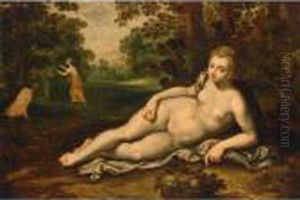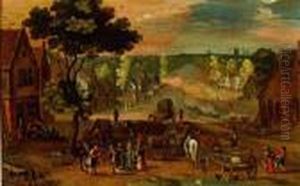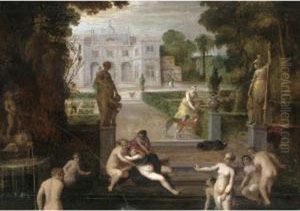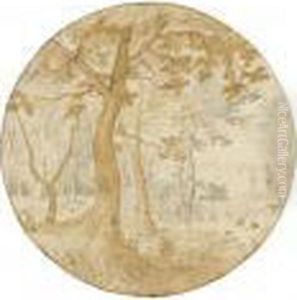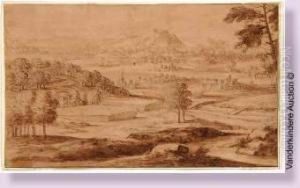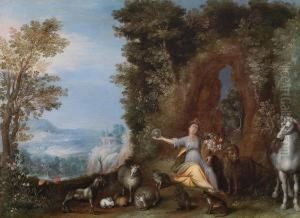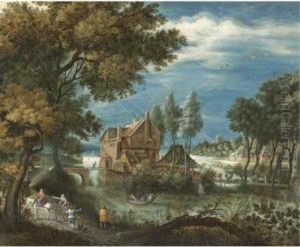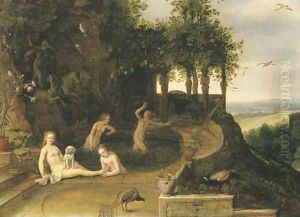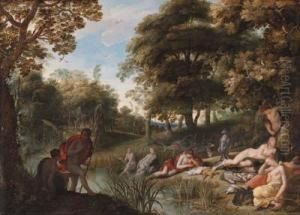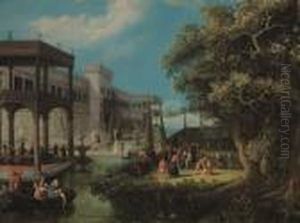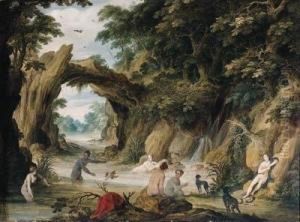Adriaan van Stalbemt Paintings
Adriaan van Stalbemt was a Flemish painter, printmaker, and draftsman active in the early 17th century. Born in Antwerp in 1580, he grew up in an era that is often considered the Golden Age of Flemish painting. Van Stalbemt was known for his landscapes, allegorical scenes, and staffage, which are figures or animals in landscapes or architectural settings. He became a master in the Antwerp Guild of St. Luke in 1609, and his work reflects the influence of other Flemish masters such as Jan Brueghel the Elder and Hendrick van Balen.
Throughout his career, van Stalbemt developed a distinctive style that often included fantastical elements, such as exotic animals and mythological creatures, within his landscapes. These works were highly sought after by patrons who appreciated the combination of skilled landscape painting with imaginative and often whimsical details. Van Stalbemt's paintings also sometimes featured historical or biblical scenes, set within lush and detailed natural environments.
In addition to his paintings, van Stalbemt also produced a number of engravings and drawings. His skill as a draftsman is evident in the detailed preparatory sketches that survive, which also provide insights into his creative process.
Adriaan van Stalbemt's work was not limited to his native Flanders. He was also active in the court of King James I in England, which indicates the wide recognition his art received beyond his homeland. His international reputation was a testament to the allure and quality of his artwork.
Despite his success, much of van Stalbemt's life and work remain less well-known than some of his contemporaries. However, his contribution to the Flemish tradition of painting is significant, and his works can be found in various museums and collections around the world. Van Stalbemt continued to paint until his death in Antwerp in 1662, leaving behind a legacy of vibrant and imaginative art that continues to be appreciated by art historians and collectors alike.
